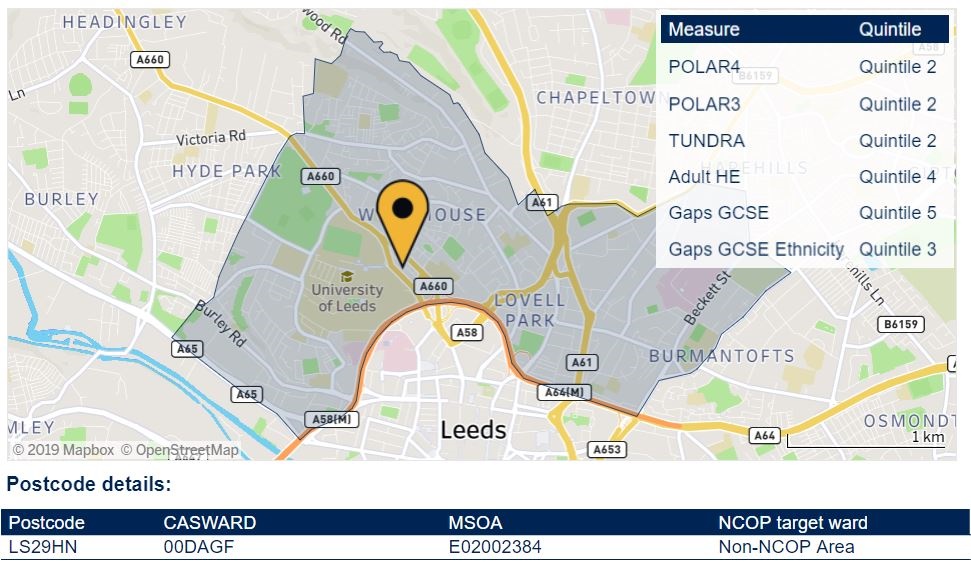Talking about Targeting

In this article I discuss the approaches to targeting in a schools and colleges context and then look to individual criteria to be a recipient of the Uni Connect opportunities (previously branded as National Collaborative Outreach Programme).
The directives and guidance from the Regulatory body for Higher Education, the Office for Students (OfS) is clear on who to target for the collaborative programme. The emphasis of targeted outreach has been based on location (postcode), by a group’s under representation defined by the main protected characteristics of Ethnicity, Disability and Gender or by household contexts (for example a looked after young person, young carer, refugee, asylum seeker, from a military services family or an estranged student) and by first in family to consider progression to Higher education.
At the outset of Phase I of the National Collaborative Outreach Programme, all of the Regional Collaborative Partnerships across England were provided with already identified wards of lower than expected participation in Higher Education (HE) to target.
These wards are mapped in ‘Participation by Local Areas’ POLAR Version 4. POLAR4 is currently, the most recent iteration of this form of visual mapping via residential postcodes. It was calculated on students who had begun their studies between 2009/10 and 2013/14. It is split into quintiles; fifths of the viable population who might progress into Level 4 education. Within these wards the State Schools with high percentages of the most disadvantaged pupil/student cohorts (POLAR4 quintile 1) have been identified.
However there is often an intersectionality of factors at play, between under-represented groups in HE where identification of individuals occurs in terms of their protected characteristics and possession of WP criteria. One factor alone does not necessarily exist in isolation in a context of disadvantage.
The challenge presented by the complexity of targeting interventions specifically to cohorts who have been defined by simple criteria is vividly demonstrated by the Children’s Commissioner’s ‘Vulnerability Report’ 2019. This report presents the latest snapshot of the scale of numbers who are caught up in situations of childhood vulnerabilities.
In the 2019 report it states that 2.3 million children are living at risk because of a vulnerable background in England. An estimated 829,000 children are ‘invisible’, not known to services and not receiving any support.
It also attempts to map the rates of children affected in households where one adult is affected by the ‘toxic trio’ that impacts upon the whole family. The three factors are adult alcohol or substance abuse, domestic violence, abuse and parental mental health problems. There is also the potential for further knock on effect to the context of disadvantage; the child being put into care, homelessness, unemployment, poverty and related health deprivations.
The Children’s Commissioners report identifies 70 groups across 7 themes and it warns that many young people are situated in multiple groups and may move between groups.
In the Technical report related to the data, it is warned that there remains significant gaps in data on the support provided to children who do not meet statutory thresholds; children who do not qualify for child protection plans, Special Educational Needs (SEN) statements or Education Health Care Plans (EHCP) (p.4).
To summarise on this brief and hopefully provocative piece on postcode identification of individuals and the complexity of targeting interventions. A more embracing and personalised approach to the individual’s needs and context may serve students better.
This is where the model of GHWY, as a collaborative partnership between Universities, Colleges and Schools placing a Higher Education Progression Officer (HEPO) within each school. This enables them to champion and support the most disadvantaged cohorts within their institution, which is so valuable: particularly in communications and collaborative approaches with the HE providers.
However this requires to be a sustained effort to maintain a collaborative and multi-agency ethos that is going to be present throughout the whole education journey of a young person over successive years of their education.
By Martell Baines FHEA. Progression Manager. Leeds Arts University
References
POLAR (Participation by Local Areas Version 4)
Young Participation by area. Search by Postcode- Office for Students
Children’s Commissioners Report 2019
https://www.childrenscommissioner.gov.uk/publication/childhood-vulnerability-in-england-2019/
